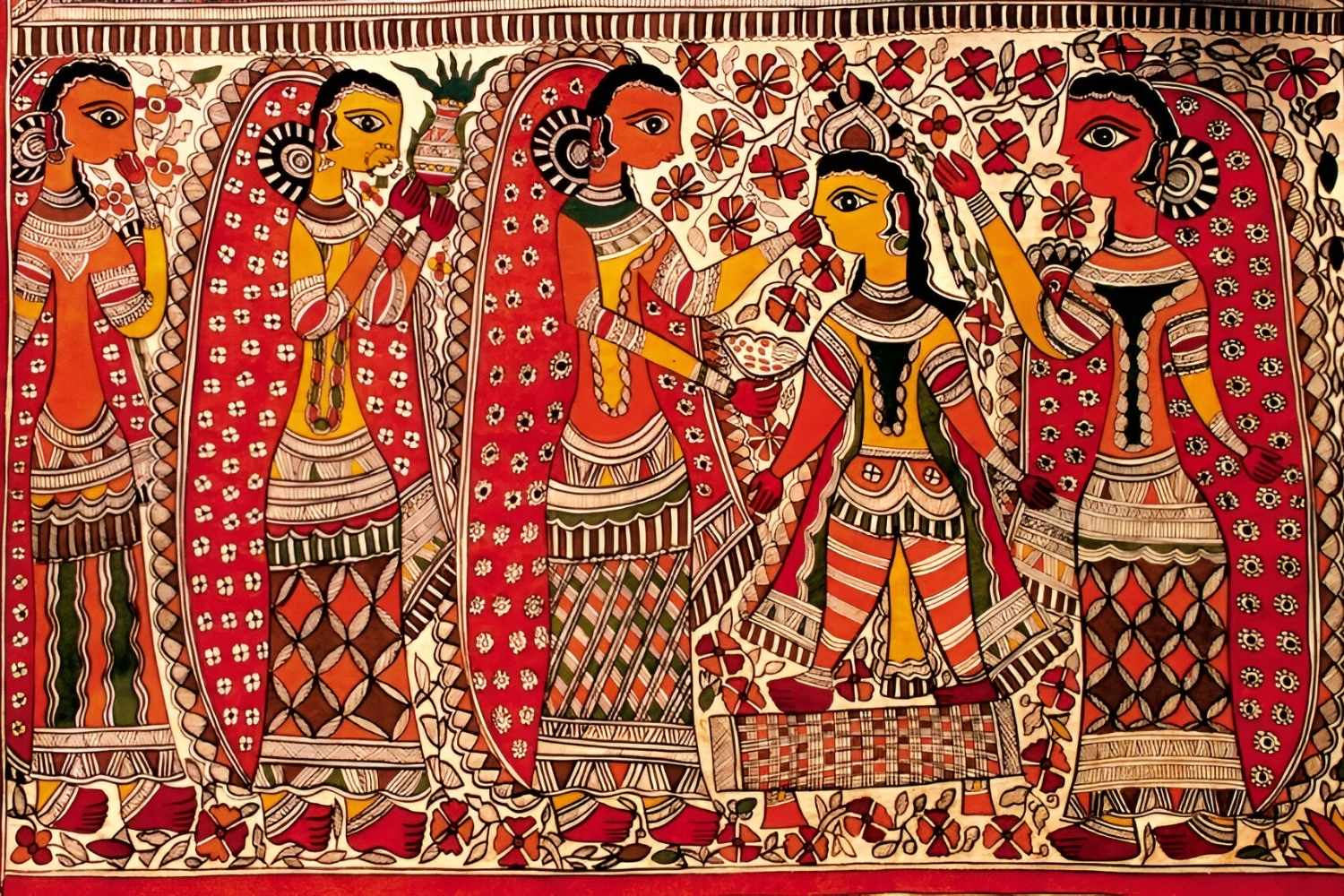
Folk art is a vibrant, colorful expression of culture and tradition. It's created by everyday people, often with no formal training, using materials available in their communities. This art form reflects the values, beliefs, and stories of the people who make it. From quilts and pottery to carvings and paintings, folk art is as diverse as the cultures it comes from. Why is folk art important? It preserves history, fosters community pride, and provides a unique window into the lives of people from different times and places. Let's dive into 25 fascinating facts about this captivating art form!
Key Takeaways:
- Folk art reflects community traditions and history through functional, colorful, and locally sourced creations, spanning from ancient origins to modern influences.
- From textile arts to Mexican, African, Indian, Russian, and Japanese folk art, each region's unique culture is showcased through vibrant and symbolic creations.
What is Folk Art?
Folk art is a fascinating genre that reflects the cultural life of a community. It is often created by self-taught artists and is deeply rooted in traditions. Here are some intriguing facts about folk art that might surprise you.
-
Folk art is often functional. Many pieces serve practical purposes, like quilts, pottery, and furniture.
-
It is community-based. Folk art is usually created within a community and passed down through generations.
-
Materials are often locally sourced. Artists use materials that are readily available in their environment, such as wood, clay, and fabric.
-
It tells stories. Folk art often depicts local legends, historical events, and everyday life.
-
Bright colors are common. Many folk art pieces are known for their vibrant and bold color schemes.
Historical Roots of Folk Art
Understanding the history of folk art helps appreciate its depth and significance. Its roots can be traced back to ancient times.
-
Ancient origins. Some of the earliest forms of folk art date back to prehistoric cave paintings.
-
Medieval influence. During the Middle Ages, folk art flourished in Europe, especially in rural areas.
-
Colonial America. In the United States, folk art became prominent during the colonial period, reflecting the diverse cultures of settlers.
-
Indigenous traditions. Native American folk art has a rich history, with unique styles and techniques passed down through tribes.
-
Industrial Revolution impact. The Industrial Revolution led to a decline in folk art as mass-produced goods became more common.
Types of Folk Art
Folk art comes in many forms, each with its own unique characteristics. Here are some popular types.
-
Textile arts. This includes quilting, embroidery, and weaving, often featuring intricate patterns.
-
Woodworking. Carved wooden items like toys, furniture, and sculptures are common in folk art.
-
Metalwork. Folk artists create items from metal, including jewelry, tools, and decorative pieces.
-
Ceramics. Pottery and clay sculptures are widely produced in many cultures.
-
Painting. Folk paintings often depict everyday scenes, religious themes, and folklore.
Folk Art Around the World
Folk art varies greatly from one region to another, reflecting the unique cultures and traditions of each area.
-
Mexican folk art. Known for its vibrant colors and Day of the Dead motifs.
-
African folk art. Features masks, textiles, and beadwork with symbolic meanings.
-
Indian folk art. Includes intricate patterns in textiles, pottery, and wall paintings.
-
Russian folk art. Famous for its Matryoshka dolls and elaborate wooden carvings.
-
Japanese folk art. Encompasses a wide range of crafts, including origami, pottery, and textiles.
Modern Influence on Folk Art
While rooted in tradition, folk art continues to evolve and influence contemporary art.
-
Revival movements. There have been various movements to revive and preserve folk art traditions.
-
Fusion with contemporary art. Modern artists often incorporate folk art techniques and motifs into their work.
-
Digital age impact. The internet has allowed folk artists to share their work with a global audience.
-
Tourism influence. Folk art has become a popular souvenir, influencing local economies.
-
Art festivals. Many regions host folk art festivals, celebrating and showcasing traditional crafts.
The Heartbeat of Culture
Folk art isn't just about pretty pictures or handmade crafts. It's a living testament to the traditions, beliefs, and stories of communities around the world. Each piece, whether it's a quilt, a carved figure, or a painted mural, tells a story that connects us to our past and enriches our present. By appreciating and preserving folk art, we honor the creativity and resilience of those who came before us. So next time you see a piece of folk art, take a moment to think about the hands that made it and the culture it represents. It’s more than just art; it’s the heartbeat of culture, a bridge between generations, and a reminder of the beauty found in everyday life. Keep exploring, keep learning, and keep the spirit of folk art alive.
Frequently Asked Questions
Was this page helpful?
Our commitment to delivering trustworthy and engaging content is at the heart of what we do. Each fact on our site is contributed by real users like you, bringing a wealth of diverse insights and information. To ensure the highest standards of accuracy and reliability, our dedicated editors meticulously review each submission. This process guarantees that the facts we share are not only fascinating but also credible. Trust in our commitment to quality and authenticity as you explore and learn with us.
